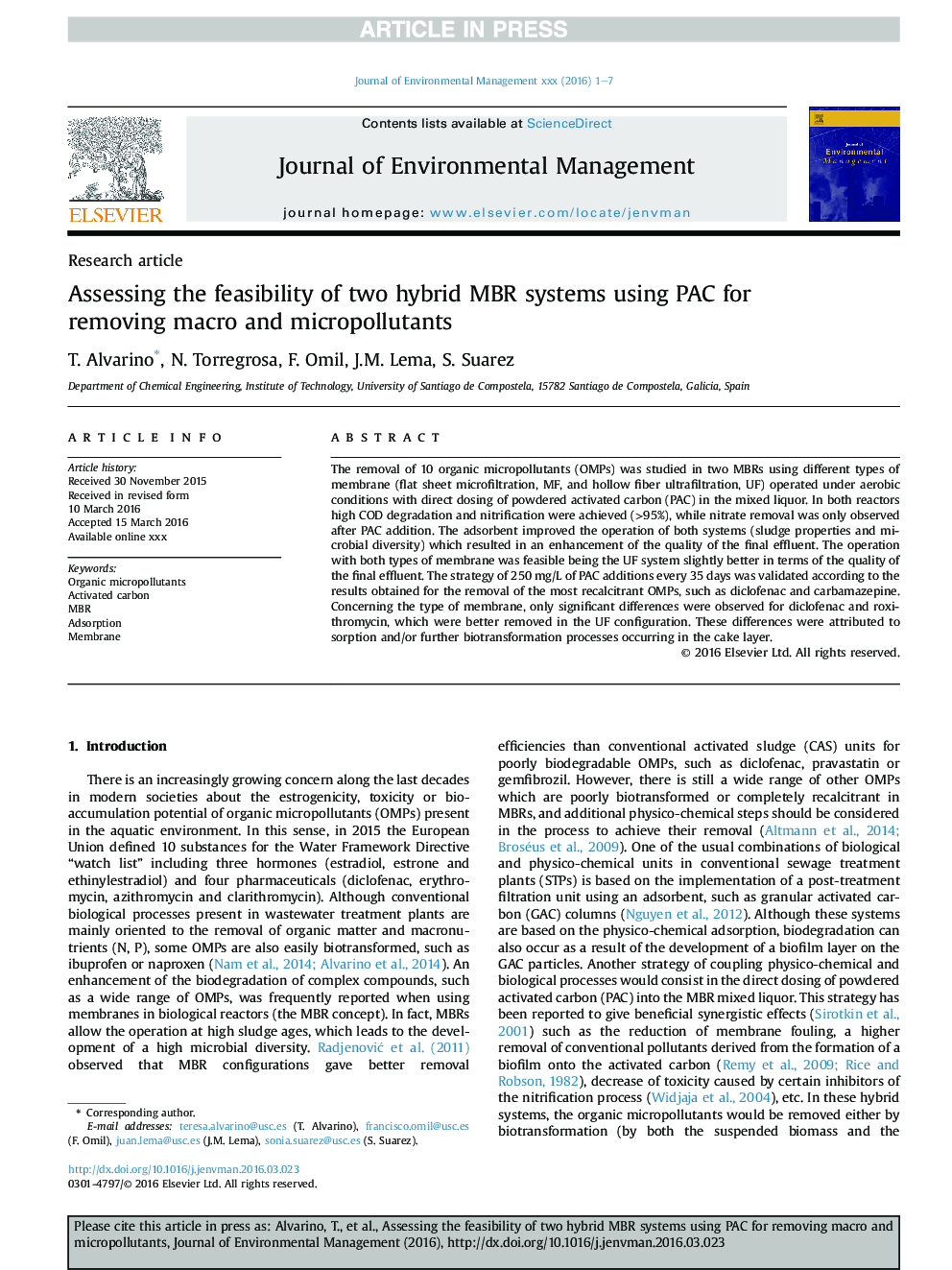| Article ID | Journal | Published Year | Pages | File Type |
|---|---|---|---|---|
| 5116445 | Journal of Environmental Management | 2017 | 7 Pages |
Abstract
The removal of 10 organic micropollutants (OMPs) was studied in two MBRs using different types of membrane (flat sheet microfiltration, MF, and hollow fiber ultrafiltration, UF) operated under aerobic conditions with direct dosing of powdered activated carbon (PAC) in the mixed liquor. In both reactors high COD degradation and nitrification were achieved (>95%), while nitrate removal was only observed after PAC addition. The adsorbent improved the operation of both systems (sludge properties and microbial diversity) which resulted in an enhancement of the quality of the final effluent. The operation with both types of membrane was feasible being the UF system slightly better in terms of the quality of the final effluent. The strategy of 250Â mg/L of PAC additions every 35 days was validated according to the results obtained for the removal of the most recalcitrant OMPs, such as diclofenac and carbamazepine. Concerning the type of membrane, only significant differences were observed for diclofenac and roxithromycin, which were better removed in the UF configuration. These differences were attributed to sorption and/or further biotransformation processes occurring in the cake layer.
Related Topics
Physical Sciences and Engineering
Energy
Renewable Energy, Sustainability and the Environment
Authors
T. Alvarino, N. Torregrosa, F. Omil, J.M. Lema, S. Suarez,
